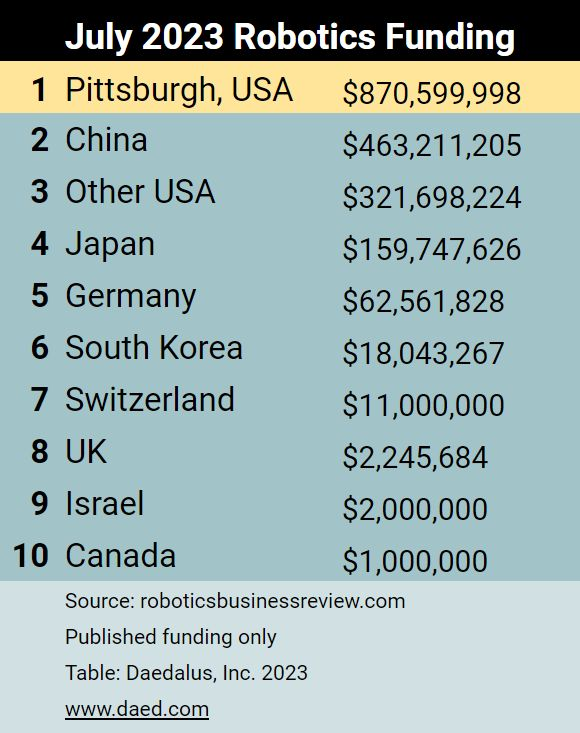I love statistics. But I also recognize how easy it is to be tricked by data.
Here is an example illustrating how factually accurate statistics can be misleading without proper context.
Take a quick look at this chart showing Robotics funding in July 2023.

If you look at that chart, you might conclude that Pittsburgh is a Mecca of innovation in robotics. Carnegie Mellon is there. That makes sense, right?
However, there's an immediate red flag … it's only for the month of July 2023.
So the question becomes … why?
Turns out, that entire number is essentially the result of a single check to Stack AV to recapitulate what was Argo. Argo is a Ford and VW-backed autonomous vehicle startup, and Stack AV is the founders' new self-driving startup.
One significant move skewed the scale so strongly that it trumped major countries' expenditures that month.
There's often an issue about not having enough data to be statistically significant. Another common issue is confusing coincidence with causality.
This isn't meant to undermine the effect of one data point on a chart. For example, think about Taylor Swift's impact on the economy. Taylor's Eras Tour has already netted more than $100M but also reportedly has had a $5B impact on the economy.
Cincinnati reported that Taylor Swift's Concert Tour brought $90M to their city in two days. Her 60,000 attendees pushed the city's hotels to 98% occupancy rates. Beyond that, her concert-goers also consumed the city's restaurants, bars, tourism, and retail.
Here is a different example of accurate data leading to an unusual conclusion, At a Genius Network meeting this week, the creator of OsteoStrong and the X3 bar spoke about people's misconceptions about fitness and workouts. One point, in particular, caught my attention. He claimed that most people only get stronger as a direct result of their workouts about ten times in their lives. This isn't true of competitive athletes or weightlifters – but the average gym goer. Why? His logic was you only get stronger when you take your muscle to failure, past its previous limits. Most people rarely work out to exhaustion and don't keep track of their best. They often stop one rep – or even half a rep – before there's a meaningful improvement.
A good lesson for life.
As entrepreneurs, we've all seen people get the "one big break" or the "one domino" that led to success. The goal is often to be good enough that you only have to get lucky once.
While one data point can ruin a statistic, it can also change your life. The power of an inflection point.
Hope that helps.

Leave a Reply